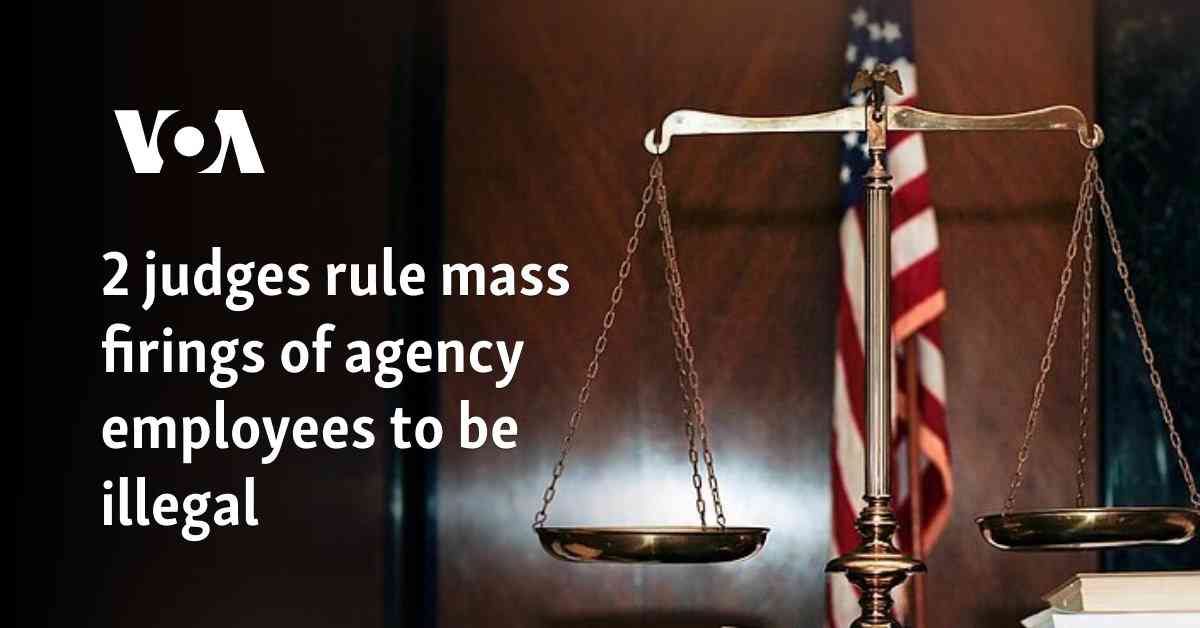Federal judges have made a groundbreaking decision this week, declaring the mass firings of agency employees by the Trump administration as illegal. In two separate cases, thousands of probationary employees have been ordered to be reinstated, at least temporarily, as a result of this ruling. The Trump administration has responded by filing appeals in both cases, citing the injunction as unconstitutional and a breach of the president’s executive authority.
In the first case, U.S. District Judge William Alsup of the Northern District of California criticized the firing process as a “sham,” highlighting instances where employees were unjustly terminated for alleged poor performance. Judge Alsup expressed his disappointment with the situation, stating, “It is sad, a sad day. Our government would fire some good employee and say it was based on performance when they know good and well that’s a lie.” Following his ruling, federal agencies such as Agriculture, Defense, Energy, Interior, Treasury, and Veterans Affairs were instructed to reinstate the affected employees immediately. However, Judge Alsup clarified that agencies could still proceed with layoffs as long as proper procedures were followed.
Another significant ruling came from U.S. District Judge James Bredar, who also found that probationary employees had been unlawfully terminated by 18 agencies. This decision followed arguments from Democratic attorneys general representing various states, asserting that agencies had failed to provide the required 60-day notice for mass layoffs. Judge Bredar emphasized the impact of these sudden terminations on states, noting that they were unprepared for the influx of unemployed individuals and are currently struggling to manage the consequences.
The Legal Battle Unfolds
The legal battle surrounding the mass firings has raised questions about the accountability and transparency of government actions. Federal judges have played a crucial role in upholding the rights of affected employees and ensuring that due process is followed in employment decisions. The rulings have sparked debates about the balance of power between the executive branch and the judiciary, with the White House condemning the injunctions as an overreach of authority.
Expert legal opinions have shed light on the complexities of the cases, highlighting the importance of adhering to established procedures and protecting employees’ rights in the workplace. Attorney Sarah Thompson remarked, “These rulings underscore the significance of fair treatment in employment practices and the need for government agencies to act responsibly when making staffing decisions. The judiciary’s intervention serves as a safeguard against any potential abuses of power.”
The Human Impact
Behind the legal proceedings and political debates, there lies a human impact that cannot be overlooked. The reinstatement of thousands of probationary employees brings a sense of relief and hope for those who were unjustly dismissed from their jobs. For these individuals, the rulings represent a form of justice and validation of their hard work and dedication to public service.
One affected employee, Jane Doe, shared her experience of being wrongfully terminated and the emotional toll it took on her and her family. “I was devastated when I received the news of my dismissal. It felt like my years of service and commitment were disregarded without any valid reason. The court’s decision to reinstate us gives me renewed faith in the system and restores my belief in fairness and accountability.”
As the legal saga continues to unfold, the stories of impacted employees serve as a poignant reminder of the real-world consequences of bureaucratic decisions and the importance of upholding ethical standards in governance. The battle for justice and integrity in the workplace remains ongoing, with each ruling shaping the future landscape of employee rights and government accountability.














